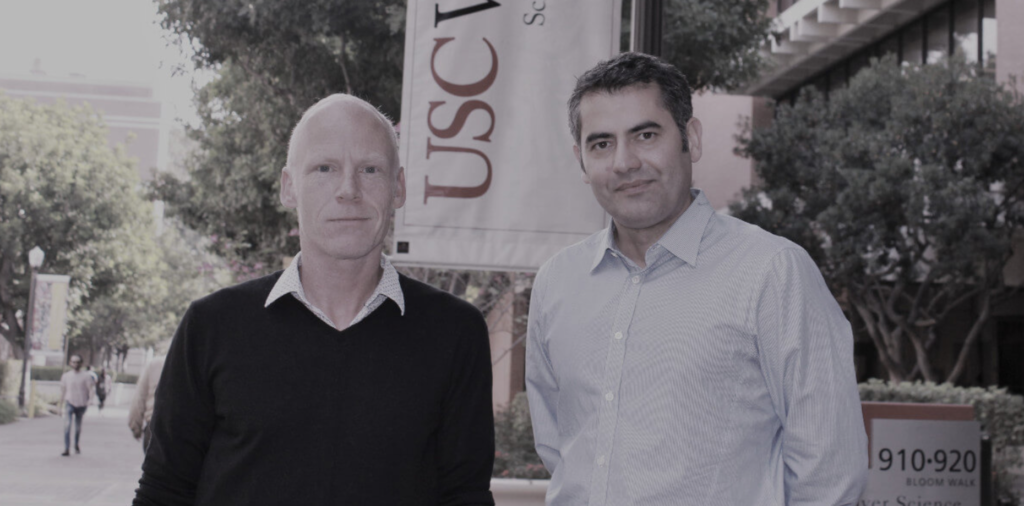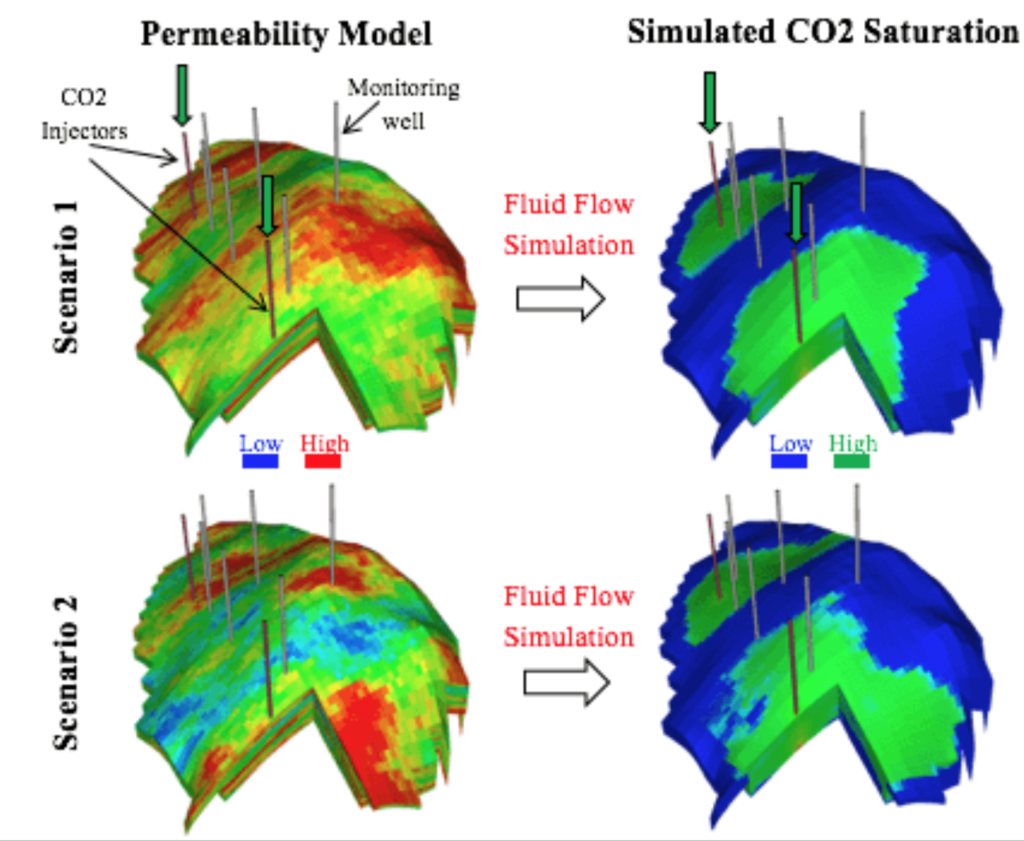
A Digital Underground
A new research center at USC Viterbi will tackle some “deep” science to improve how natural resources are detected and extracted.
A golden age of easy-to-extract oil and natural gas appears to be coming to an end. As a result, major oil companies especially are developing new technology to help detect underground oil and gas reservoirs, some of which lie more than 3,000 meters below the earth’s surface. The process of detecting, drilling and extracting from these reservoirs is complex and fraught with challenges. Indeed, the field of subsurface science seeks to understand the dynamics of underground rock formations during man-made disturbances like oil extraction, groundwater pumping, geothermal energy recovery and carbon dioxide storage.
The new Foundation CMG Industrial Research Center for Advanced Reservoir Characterization and Forecasting (ARCF) at USC Viterbi is poised to aid in this effort. The center will help develop state-of-the-art imaging technology and efficient, environmentally responsible best practices for subsurface resource recovery. Foundation CMG, whose mandate is to investigate leading-edge research and innovation in oil and gas reservoir modeling, provided $1.35 million in seed funding for the center at USC Viterbi, one of only 15 such centers worldwide.
Behnam Jafarpour and Kristian Jessen, both associate professors in the Mork Family Department of Chemical Engineering and Materials Science at USC Viterbi, will co-direct the center. Their focus is on developing novel imaging and forecasting technologies.
“Subsurface characterization is very much like solving a giant jigsaw puzzle,” Jafarpour said. “You may have very few pieces of the puzzle here and there, but they reveal little information about what fills the gap between them.”
Jafarpour, whose background is in electrical engineering, will develop advanced 3-D imaging tools that can help create a more complete picture of important material properties in underground rocks and their variability in space. This area, called dynamic reservoir characterization, is critical for predicting the behavior of subsurface energy and water resources, as well as waste disposal systems, he explained.

EXAMPLES OF A SIMULATION MODEL REPRESENTING THE GEOLOGIC STRUCTURE, FORMATION PERMEABILITY DISTRIBUTION, AS WELL AS INJECTION AND MONITORING WELLS IN A HYPOTHETICAL THREE-DIMENSIONAL GEOLOGIC CO2 STORAGE SITE (LEFT), AND THE PREDICTED POST-INJECTION EVOLUTION OF CO2 IN THE AQUIFER (RIGHT). GRAPHIC COURTESY OF BEHNAM JAFARPOUR
“There is a lot of potential to combine imaging tools and techniques with reservoir monitoring and response data and geological insight to fill in the missing pieces of the puzzle,” Jafarpour said. “If done successfully, the result can significantly improve our understanding of the behavior of these systems and prediction of the resource recovery process.”
Jessen’s area of expertise is in the physics of fluid flow, specifically fluid flow in rocks. Despite appearances, rocks actually have porous surfaces that make it possible for liquids and gases to pass through them. He intends to develop predictive models for the physics at play during fluid movement in the reservoirs themselves.
“[Jafarpour] tries to figure out what [the subsurface] looks like, while I predict how fluids will move in the subsurface,” Jessen explained. “So, basically what he’s doing provides input to me in terms of the variability of the properties within the subsurface materials, and I try to look at how that would affect movement of fluids in a larger volume. That then feeds back into his work.”
Jessen’s and Jafarpour’s focus over the next five years, the duration of the grant, will be to develop relationships with industry and determine research topics and activities that address key challenges in subsurface modeling. Ultimately, the center will comprise a 20-member research team that includes both graduate students and postdoctoral faculty, and will be supported by a consortium of industry representatives.
“We want to take the technology that is used to make decisions about how we recover and utilize the subsurface resources on the planet to the next level so that we can make even better decisions,” Jessen said. “We need to do a better job there to ensure that we develop and extract the resources in the most efficient ways possible.”
Jafarpour and Jessen are thrilled at USC Viterbi’s selection and the opportunities ahead.
“I’m really excited about the contribution that multidisciplinary scientific approaches can bring to the technology and computational models that we use in optimizing and predicting these [subsurface] systems, leading to improved energy recovery with minimal environmental impact and associated risks,” Jafarpour said.